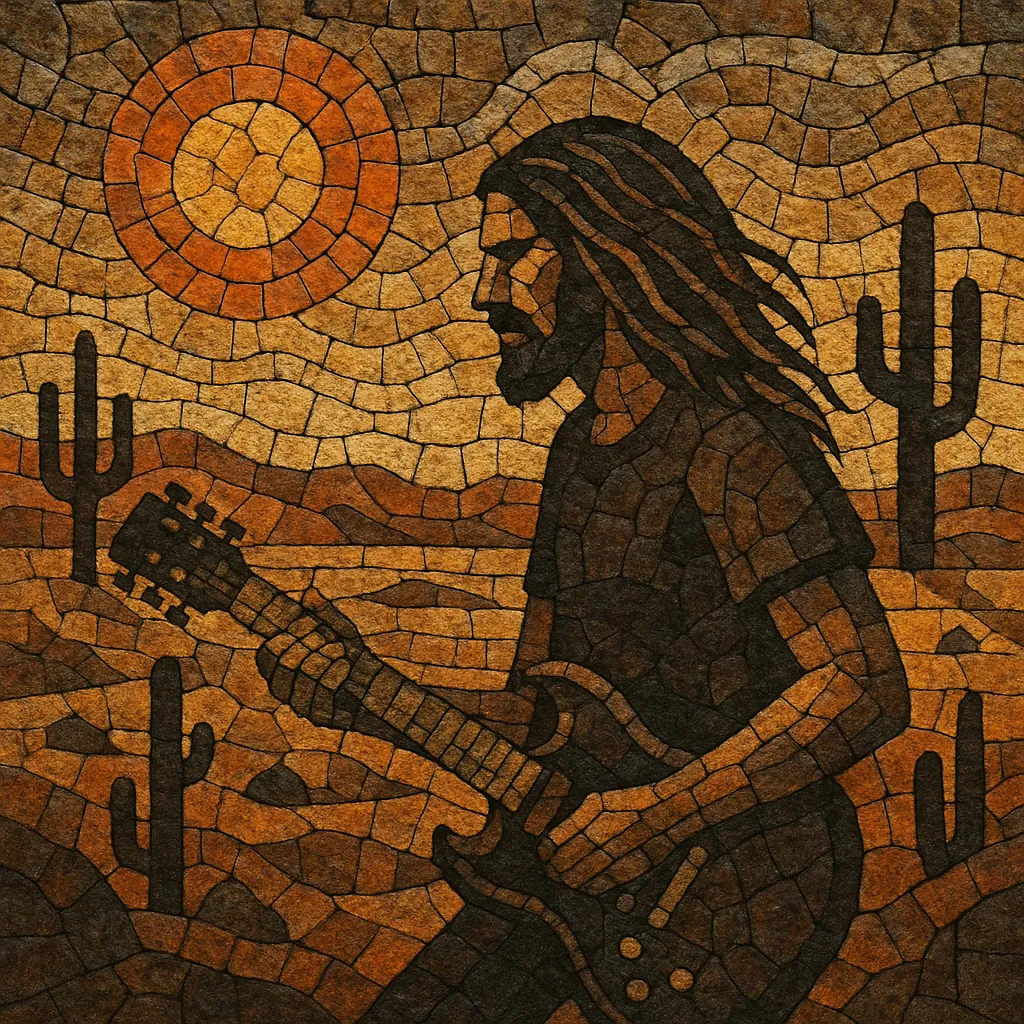Desert rock is a heavy, groove-forward guitar music associated with the Palm Desert/Coachella Valley scene of Southern California. It blends the weight and riff-focus of 1970s hard rock and early metal with the expansive ambiance of psychedelic and space rock.
Characterized by down-tuned, fuzz-saturated guitars, hypnotic mid-tempo grooves, and a dry, roomy production aesthetic, the style often feels both heavy and spacious at once. Songs emphasize circular riffs, modal or blues-based melodies, and long-form jams, evoking the openness of the desert through reverb-laden leads and minimalistic arrangements.
Lyrically and visually, desert rock draws on themes of isolation, vast landscapes, road culture, and altered states. The scene built its identity around DIY “generator parties” in the desert, where bands powered their rigs with portable generators and played all-night sets under the open sky.
Desert rock crystallized in the Palm Desert/Coachella Valley of the United States, where musicians staged DIY “generator parties” in the open desert. Early foundational groups like Yawning Man developed serpentine, reverb-drenched instrumentals that emphasized feel and atmosphere as much as riffs. Kyuss then codified the heavy side of the sound—combining down-tuned, fuzzed-out guitars with hypnotic rhythms—on landmark recordings in the early 1990s, often with producer Chris Goss helping shape the sonics.
After Kyuss disbanded in the mid-1990s, its members seeded multiple projects that expanded the scene’s range: Queens of the Stone Age distilled a tighter, minimalist groove; Brant Bjork explored laid-back, funk-inflected heaviness; and Mondo Generator and Unida pushed punk-edged and riff-centric directions. Rancho de la Luna studio in Joshua Tree became a creative hub, hosting the collaborative Desert Sessions that furthered the style’s experimental and communal ethos.
The sound spread internationally in the 2000s, influencing bands across Europe and beyond. A network of festivals (e.g., Desertfest) and boutique labels nurtured the aesthetic—low tunings, big fuzz, hypnotic grooves—while artists continued to mix desert rock with psych, garage, and alternative rock. The genre remains a touchstone for modern heavy-psych and stoner scenes, prized for its balance of weight, space, and groove.
Desert rock’s legacy lies in its fusion of heaviness with openness: circular riffs and mid-tempo propulsion meet panoramic ambience. Its DIY roots, communal collaborations, and distinctive “desert atmosphere” helped shape stoner rock and modern heavy-psych, while establishing an enduring sonic vocabulary of fuzz, space, and motion.


